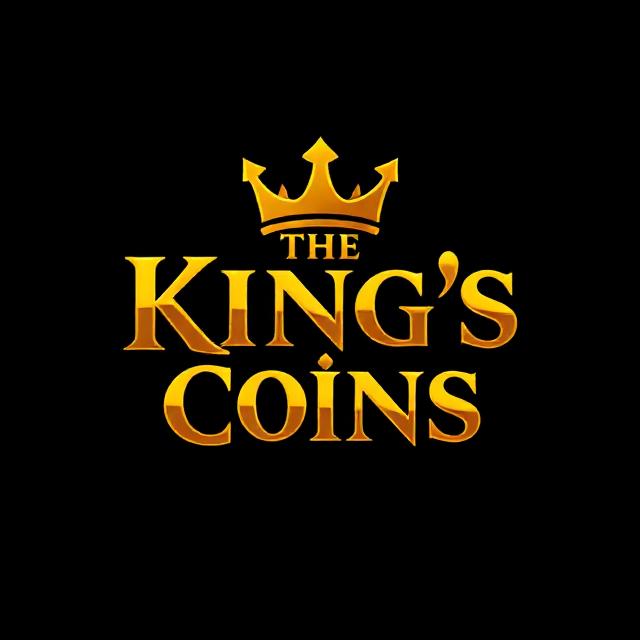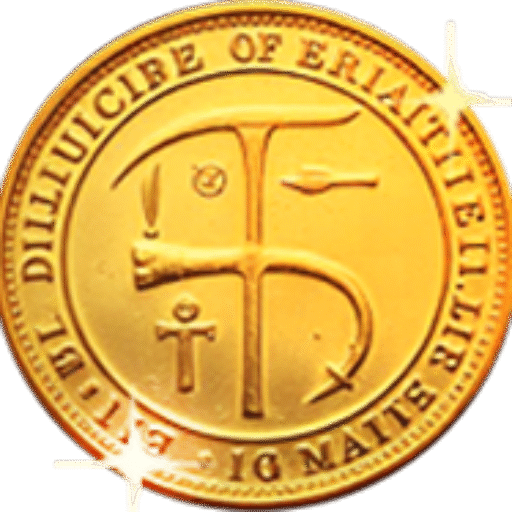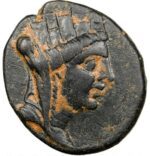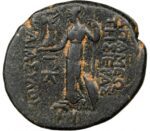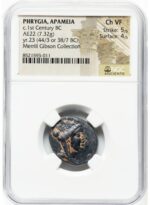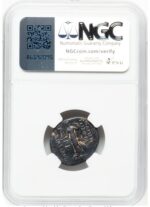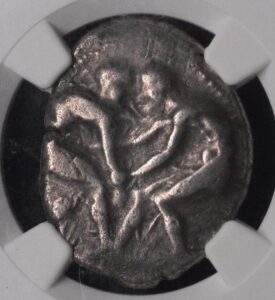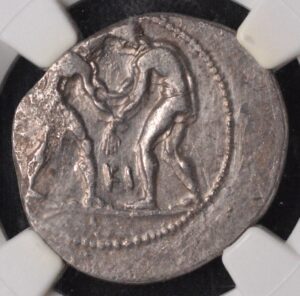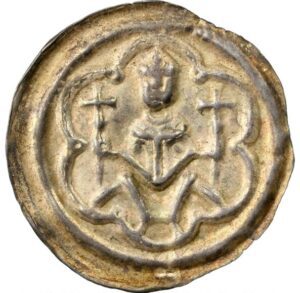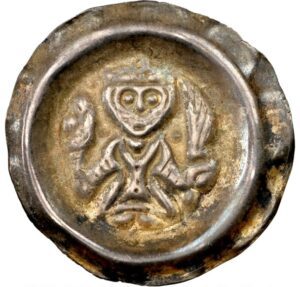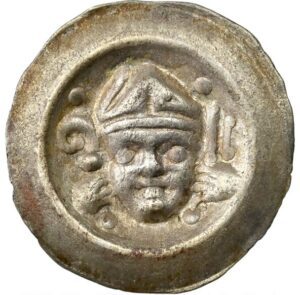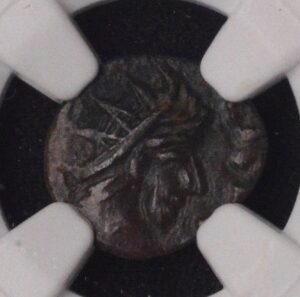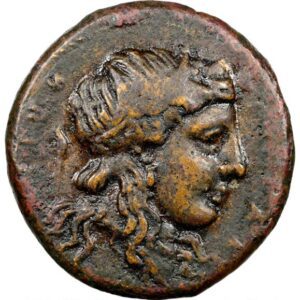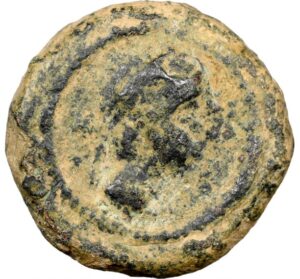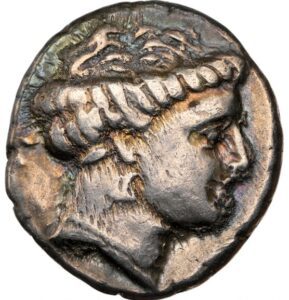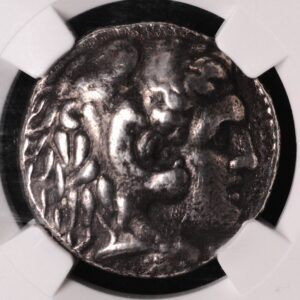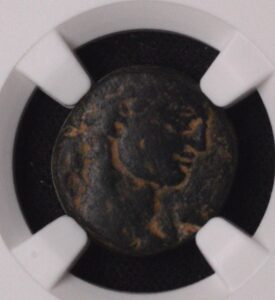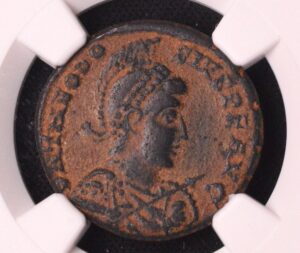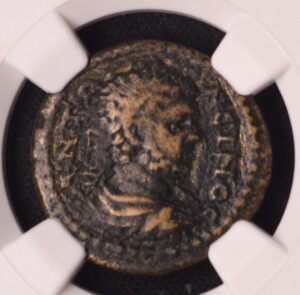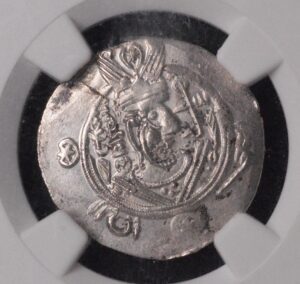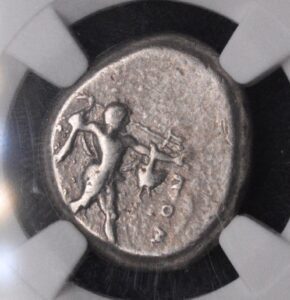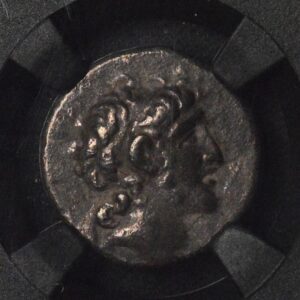Description
The Roman Provincial bronze coin from Phrygia, Apameia (ca. 1st century BC) is a historically significant bronze piece from one of Asia Minor’s most prominent commercial and religious centers during the late Hellenistic to early Roman transition. Coins of this period were issued when Apameia (also known as Apameia Kibotos) became an autonomous city under rising Roman influence following the fall of the Seleucid Kingdom.
This particular AE coin—22 mm, 7.32 grams, struck around 50–40 BC—reflects Apameia’s vibrant civic coinage. The obverse typically features deities such as Athena, Zeus Kelaineus, or Tyche, while the reverse often bears local symbols like an eagle, Marsyas playing an aulos, or Nike advancing with a wreath and palm. Many reverses bear the inscription ΑΠΑΜΕΩΝ, meaning “of the people of Apameia.” Some rare issues also include religious imagery tied to the myth of Noah’s Ark (the Kibotos), since Apameia was traditionally regarded as the resting place of the Ark in ancient mythology.
The NGC grade of Choice VF 5/5 – 4/5 indicates a well-centered strike with excellent detail (5/5 for strike) and attractive but moderately worn surfaces (4/5 for preservation), representing a top-tier certified example among surviving bronzes of this period.
Market data shows that coins of this type and condition generally trade between $120 and $250, depending on the obverse deity, rarity of the reverse type, and patina quality. Exceptional examples featuring fine style or rarer typologies may exceed this range at auction.
In summary, the Phrygia, Apameia AE (22 mm, 7.32 g, ca. 1st century BC, NGC Choice VF 5/5–4/5) is a superbly preserved Roman Provincial bronze that captures the blending of Greek and Roman iconography from one of Asia Minor’s foremost trading hubs, celebrated for its artistry, mythological links, and pivotal role in early Roman Asia.
The Roman Provincial bronze coin from Phrygia, Apameia (ca. 1st century BC) is a historically significant bronze piece from one of Asia Minor’s most prominent commercial and religious centers during the late Hellenistic to early Roman transition. Coins of this period were issued when Apameia (also known as Apameia Kibotos) became an autonomous city under rising Roman influence following the fall of the Seleucid Kingdom.
This particular AE coin—22 mm, 7.32 grams, struck around 50–40 BC—reflects Apameia’s vibrant civic coinage. The obverse typically features deities such as Athena, Zeus Kelaineus, or Tyche, while the reverse often bears local symbols like an eagle, Marsyas playing an aulos, or Nike advancing with a wreath and palm. Many reverses bear the inscription ΑΠΑΜΕΩΝ, meaning “of the people of Apameia.” Some rare issues also include religious imagery tied to the myth of Noah’s Ark (the Kibotos), since Apameia was traditionally regarded as the resting place of the Ark in ancient mythology.
The NGC grade of Choice VF 5/5 – 4/5 indicates a well-centered strike with excellent detail (5/5 for strike) and attractive but moderately worn surfaces (4/5 for preservation), representing a top-tier certified example among surviving bronzes of this period.
Market data shows that coins of this type and condition generally trade between $120 and $250, depending on the obverse deity, rarity of the reverse type, and patina quality. Exceptional examples featuring fine style or rarer typologies may exceed this range at auction.
In summary, the Phrygia, Apameia AE (22 mm, 7.32 g, ca. 1st century BC, NGC Choice VF 5/5–4/5) is a superbly preserved Roman Provincial bronze that captures the blending of Greek and Roman iconography from one of Asia Minor’s foremost trading hubs, celebrated for its artistry, mythological links, and pivotal role in early Roman Asia.
The Roman Provincial bronze coin from Phrygia, Apameia (ca. 1st century BC) is a historically significant bronze piece from one of Asia Minor’s most prominent commercial and religious centers during the late Hellenistic to early Roman transition. Coins of this period were issued when Apameia (also known as Apameia Kibotos) became an autonomous city under rising Roman influence following the fall of the Seleucid Kingdom.
This particular AE coin—22 mm, 7.32 grams, struck around 50–40 BC—reflects Apameia’s vibrant civic coinage. The obverse typically features deities such as Athena, Zeus Kelaineus, or Tyche, while the reverse often bears local symbols like an eagle, Marsyas playing an aulos, or Nike advancing with a wreath and palm. Many reverses bear the inscription ΑΠΑΜΕΩΝ, meaning “of the people of Apameia.” Some rare issues also include religious imagery tied to the myth of Noah’s Ark (the Kibotos), since Apameia was traditionally regarded as the resting place of the Ark in ancient mythology.
The NGC grade of Choice VF 5/5 – 4/5 indicates a well-centered strike with excellent detail (5/5 for strike) and attractive but moderately worn surfaces (4/5 for preservation), representing a top-tier certified example among surviving bronzes of this period.
Market data shows that coins of this type and condition generally trade between $120 and $250, depending on the obverse deity, rarity of the reverse type, and patina quality. Exceptional examples featuring fine style or rarer typologies may exceed this range at auction.
In summary, the Phrygia, Apameia AE (22 mm, 7.32 g, ca. 1st century BC, NGC Choice VF 5/5–4/5) is a superbly preserved Roman Provincial bronze that captures the blending of Greek and Roman iconography from one of Asia Minor’s foremost trading hubs, celebrated for its artistry, mythological links, and pivotal role in early Roman Asia.
CUSTOMER FEEDBACK








Related Products & Newly Released!
-
$400.00




SHIPPING POLICY
Your order is shipped from the United States with USPS tracking within one business day.
14 Day Return Policy
You can return your item back within
14 days of the purchase

Secure payments
Your payments are 100% secure and are processed through Square or PayPal on a protected security network.
SHIPPING POLICY
FREE International and Domestic (United States) shipping. Your order is shipped with USPS tracking 24 hours after you order.
14 Day Return Policy
You can return your item back within
14 days of the purchase

Secure payments
Your payments are 100% secure and are processed through Square or PayPal on a protected security network.
RESOURCES
support
Get Real Deals!
Sign up now to receive our articles for the latest insights and promotions!
RESOURCES
support
Get Fresh Articles!
Signup our newsletter to get update insight or promotions.
